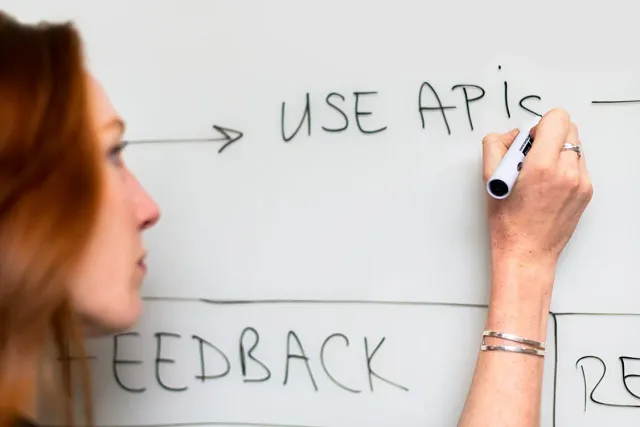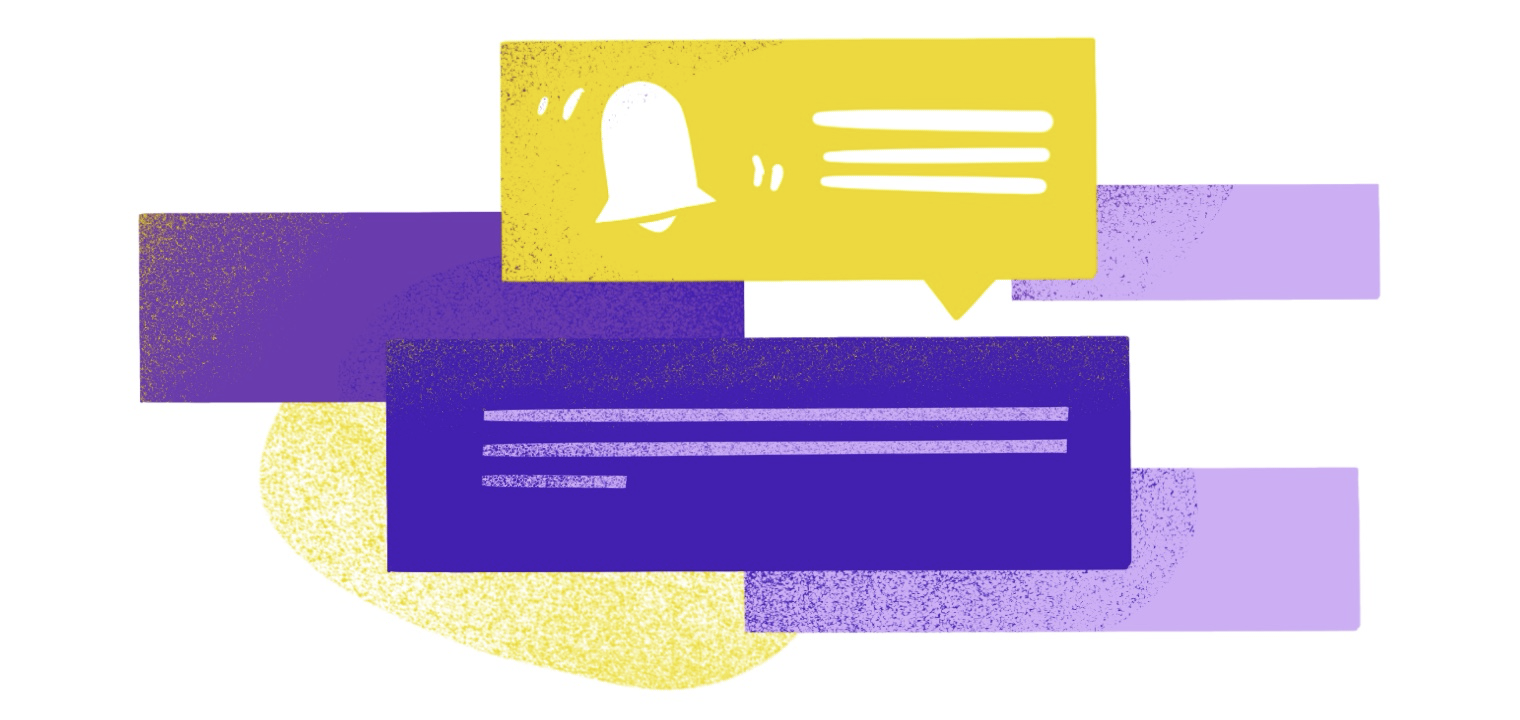Web applications like progressive web apps (PWAs) are a smart way for businesses to overcome the time and expense of building a native app. There’s a lot to love about web applications, including their push notification capabilities.
Web notifications are a core feature for real-time communication and engagement, allowing businesses to present notifications directly to users and keep them informed instantly.
These real-time alerts give you a direct line of communication with your users, increasing the chances that they’ll continue engaging with your web app. Since they don’t have your app downloaded to their phone like a traditional native app, notifications are a much-needed lifeline between businesses and users.
Setting up web push notifications is a great way to boost engagement, but you need a few key ingredients before firing off these notifications. Push messaging enables you to deliver all the information your web app needs to act, often without extra server requests. Push subscriptions and notification objects are created during the registration process, ensuring users can receive notifications even when the app is closed. Push notification APIs are arguably one of the most essential parts of getting started with web app push notifications—without them, you’d be in notification no-man’s-land. The Notifications API is used for displaying and presenting notifications to users, making it easy to present notifications in a visually accessible way. These APIs offer easy integration with existing web apps, requiring minimal setup and code. They are supported by most major browsers, though some features may require additional steps in other browsers to ensure compatibility and reliable delivery.
In this guide, we’ll explain what push notification APIs are and offer three best practices for using these all-important APIs.
- What Is a Push Notification API?
- 3 Best Practices for Push Notification APIs
- Hitting Send: Speed Up Push Notification APIs with MagicBell
- Frequently Asked Questions
- Guide to React Native Push Notifications: How To Create and Send
What Is a Push Notification API?

An Application Programming Interface (API) is a set of protocols that allows developers to send messages from a server directly to a user’s device via a web application, with each request authenticated with an API key. What’s unique about web app notifications is that they appear on the user’s device regardless of whether they have your web app open or not.
Web applications use a server to send notifications to a push service, which then sends messages to the client (the user’s device, in this case). The service worker, running in the background and independent of the webpage, receives these push messages, decrypts the payload, and triggers notifications even when the site is inactive or the browser is closed. APIs come into play by allowing developers to customize the content, appearance, and behavior of these notifications.
Whether you want better personalization or more robust analytics and reporting, push notification APIs improve the look, feel, and experience of web app notifications.
Setting Up a Push Message
Setting up a push message in your web application involves a series of coordinated steps to ensure that push notifications are delivered securely and reliably to your users. The process begins with obtaining explicit permission from users—this is typically triggered by a user gesture, such as clicking an “Allow” button when prompted by the browser. Once permission is granted, your web app uses JavaScript and the Push API to subscribe the user to push notifications. During this subscription process, your application provides a public authentication key, which helps authenticate future push messages.
After the user subscribes, the browser communicates with a push service, sending a network request that results in the creation of a PushSubscription object. This object contains all the necessary subscription data, including a unique endpoint URL and cryptographic keys. It’s essential to store this subscription data securely on your server, as it will be needed to send push messages to the user’s device in the future.
When you want to send a push notification, your server constructs a request using the web push protocol. This request includes the appropriate headers, authentication information, and the notification data (often as a stream of bytes). Libraries like web-push-libs can simplify this process, ensuring your push service authenticates the request and routes the push message to the correct browser client. By following these steps, developers can send push notifications that are delivered and displayed to users, even when the web app isn’t open, maximizing engagement and reach.
Handling Push Subscription
Effectively managing push subscriptions is key to delivering timely and relevant push notifications while respecting user preferences. A push subscription acts as a secure delivery channel between the user agent (the browser) and the push service for your web application. Each subscription is tied to a specific scope URL and includes a unique push endpoint URL, which your application server uses to send push messages directly to the user’s device.
When a user subscribes to push notifications, the browser generates a key pair: a public key, which your application server uses to authenticate outgoing push messages, and a private key, which the browser uses to decrypt incoming messages. Your server should securely store the public key and the push endpoint URL in its database, ensuring you can send push notifications to the right user at any time.
Push subscriptions may have expiration times, so it’s important for the user agent to refresh subscriptions before they expire to maintain uninterrupted delivery. If a user decides to revoke permission for push notifications, the browser will trigger a “pushsubscriptionchange” event and deactivate the affected subscriptions. This ensures that no further push messages are sent to users who have opted out, helping you respect user preferences and maintain trust.
3 Best Practices for Push Notification APIs
Implementing push notification APIs requires strategy and execution. Follow these best practices to leverage APIs for better user engagement and technical efficiency. Understanding the details of push messaging, including payload values, server responses, and subscription details, is crucial for effective implementation.
When focusing on user engagement, ensure users can manage permissions and preferences for receiving notifications. This empowers users to control how and when they receive notifications, improving satisfaction and trust.
1. Pick the Right Push Notification API

Photo by Nubelson Fernandes from Unsplash
The right push notification API makes all the difference. The API you select will determine the ease of integration, customization options, and overall reliability. There are a lot of options out there, but you can find the best choice by considering:
- Reliability: Ensure the API delivers consistently without significant downtime or delays, including reliable push service attempts and the ability to handle delivery when devices are offline.
- Ease of integration: Look for an API that offers straightforward integration with your existing tech stack. Clear documentation and support are also a bonus.
- Customization: The ability to customize notifications, including content, timing, and appearance, is essential for personalizing the user experience.
- Analytics: Comprehensive analytics tools are essential for tracking the performance of your notifications, including delivery rates, open rates, and user interactions.
- Cost effective: Choose a cost-effective solution, especially if your business has budget constraints.
- Technical features: Consider APIs that support secure authentication via authorization headers and JSON Web Token (JWT), allow you to set message expiration (message expires), configure TTL headers, and support status code diagnostics. Also, check for supported payload size and content encoding options to handle different types of data efficiently. The ability to configure push service attempts, retry logic, and manage delivery to offline devices is important for reliable message delivery.
Many services offer push notification APIs, including Firebase Cloud Messaging (FCM), OneSignal, and MagicBell. Do your research to find an API that solves your web app’s biggest headaches.
2. Don't Forget About Security
APIs are incredibly useful, but they do come with security risks. Developers must address these potential exploits early to secure the push notification process. Managing permissions is a key part of securing push notification delivery, as users can configure notification and badging permissions within device or browser settings.
API key management is a must because it controls who has access to the push notification service. Rotate API keys regularly and monitor their usage to prevent unauthorized access.
Token-based authentication is also useful. Use OAuth or other authentication methods to keep APIs from being in the wrong hands. For secure authentication, consider using JSON Web Tokens (JWT) for VAPID authentication, and ensure the correct authorization header is included in push requests. To minimize the potential for compromise, all tokens should have a limited lifespan.
Always encrypt notification payloads so unauthorized parties can’t access or alter the content. Use appropriate content encoding, such as aes128gcm, to encrypt the payload, and securely manage the auth value as specified in RFC8291 for message decryption. Just in case, it’s always best to avoid including sensitive information in push notification payloads by using placeholders or tokens instead of actual data. Users can always log into the web app to access sensitive information.
3. Encourage User Engagement
User engagement is the endgame for all push notifications. However, it can be challenging to encourage people to subscribe and tap on your push notifications. Make it easy for users to register for notifications on your site by providing a simple and clear opt-in process. Use your API’s customization features to win over more subscribers with these tips:
- Personalize: Tailor messages so they resonate with individual users. Start by customizing the opt-in prompt to make it appealing and relevant to your users. Highlight the benefits of subscribing to notifications on your site. Send personalized welcome messages when users first opt-in. This sets a positive tone and helps establish a connection immediately. Also, allow users to manage their preferences for receiving notifications, giving them control over what updates they get.
- Think about timing: Sending notifications at the right time and with appropriate frequency prevents users from feeling overwhelmed or annoyed.
- Design user-friendly notifications: Create visually appealing, easy-to-read notifications. Use bold headlines, readable fonts, and an organized layout. Consider incorporating interactive elements like buttons to encourage user engagement. Pay attention to how you present notifications to users, as clear and timely presentation increases engagement. Be sure to test your web push notifications at webpushtest.com before sending them to your audience.
Scalability and Delivery
As your web application grows, ensuring the scalability and reliable delivery of push notifications becomes increasingly important. Modern push services, such as Pusher Beams, are built to handle the demands of delivering push messages to many users across different devices and locations. These push notification services use advanced infrastructure—including load balancing, content delivery networks (CDNs), and caching—to distribute the load and minimize latency, ensuring that notifications reach users instantly and reliably.
To further support scalability, push services often implement message queueing systems that can process high volumes of push messages efficiently. This means that even during peak times, your notifications are delivered promptly and without interruption. By leveraging these scalable push notification services, developers can focus on crafting engaging messages while trusting that the underlying delivery system will perform at scale, providing a seamless experience for all users.
Insights and Analytics
Understanding how your push notifications perform is essential for optimizing your messaging strategy and improving user engagement. Most push notification services offer built-in analytics and reporting tools that provide valuable insights into the effectiveness of your campaigns. These tools track key metrics such as delivery rates, open rates, and click-through rates, giving you a clear picture of how users interact with your notifications.
For example, analytics might reveal that notifications sent at certain times of day have higher engagement, or that specific types of messages drive more user actions. By analyzing this data, developers can refine their push notification strategies—adjusting timing, content, and targeting—to better reach and engage their audience. Leveraging these insights ensures that your push notifications are not only delivered, but also make a meaningful impact on your users.
Troubleshooting Push Notification Issues
Even with the best setup, issues can arise that prevent push notifications from being delivered as intended. Common problems include failed deliveries, authentication errors, and incorrect payload formatting. To address these challenges, developers should take advantage of the Push API’s built-in error handling, which provides detailed error messages and status codes to help pinpoint the source of the problem.
Debugging tools such as browser consoles and network inspectors are invaluable for examining push notification requests and responses. These tools allow you to verify authentication headers, check payload formatting, and ensure that requests are reaching the push service as expected. By systematically troubleshooting and resolving issues, developers can maintain a reliable push notification system, ensuring that users receive timely and relevant messages and continue to engage with your web application.
Hitting Send: Speed Up Push Notification APIs with MagicBell
Push notification APIs give developers more control over how their push notifications display. While APIs come with a few considerations, effectively leveraging these tools allows businesses to create relevant, timely notifications that move the needle. Core features like push messaging and web notifications are supported, enabling real-time, multi-platform communication.
With easy integration and minimal code, the MagicBell API lets you quickly create and deliver notifications. Notifications can be created and delivered instantly, containing all the information your users need. Create a MagicBell account now to start sending notifications in less than 30 minutes.
What's the benefit of using a push notification API in a web application?
Push notification APIs provide customization, scheduling, and analytics features to help developers manage and optimize their notification strategies. These APIs allow you to customize the values in your notification payloads for more targeted messaging. Additionally, APIs provide detailed analytics and response data, including delivery status and error codes, to give you comprehensive details for optimizing your notification strategy.
Can I set up push notifications for any type of web app?
Technically, yes. Push notifications are supported by most modern browsers, including Chrome, Firefox, and Safari, but some features may require additional steps or future support in other browsers. However, push notifications are most effective for web apps with real-time updates, like eCommerce notifications or news. They’re relatively simple to set up, but it’s always important to consider whether implementing them adds value to your application.
How do I calculate push notification return on investment (ROI)?
The best way to know if a push notification system is worthwhile is to track improvements in your key performance indicators (KPIs). Track metrics like open rates, click-through rates, conversions, and user retention. Analytics tools will make it much easier to analyze and compare these metrics against your goals.
